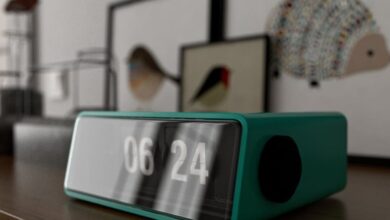How to Set up a Diy Smart Garden System
Imagine stepping into your garden and having the ability to monitor soil moisture, control watering schedules, and even receive alerts about plant health, all from your smartphone. With a DIY smart garden system, this dream can become your reality. Not only does this system make gardening more efficient, but it also enhances your interaction with nature. Let’s dive into the steps required to set up your very own smart garden.
Gather Your Materials
Before you dive into the technical aspects, gather all the materials you’ll need. Essential items include soil moisture sensors, a microcontroller (like an Arduino or Raspberry Pi), a water pump, relays, and a Wi-Fi module for connectivity. Additionally, you’ll need jumper wires, a power supply, and a suitable container for your plants. While you can find many of these components online or at local electronics stores, be sure to select quality items to ensure durability.
Design Your Layout
The layout of your smart garden is crucial for its efficiency. Decide where you want to place your plants and sensors. Ideally, you should have one moisture sensor per plant, buried in the soil at root level. This will allow for accurate readings of the moisture content. Next, plan the placement of your microcontroller and water pump. Ensure they are within reach of an electrical outlet and that the pump can easily draw water from a reservoir. Once you have a clear design, sketch it out to guide you through the assembly.
Assembling the Sensors
Now it’s time to assemble your moisture sensors. Connect the sensors to your microcontroller following the manufacturer’s instructions. Typically, they will have three wires: power, ground, and signal. Once connected, use a breadboard for initial testing. This setup allows you to alter the design without soldering components together right away.
Next, write a basic script for your microcontroller to read the sensor data. You can find numerous sample codes online that can be modified to fit your system. This script will help the microcontroller understand when the soil is dry and when it’s time to activate the water pump.
Integrating the Water Pump
With the sensors in place, it’s time to integrate your water pump into the system. Connect the pump to the relay, which will act as a switch controlled by the microcontroller. When the moisture sensor reads below a specified threshold, the microcontroller sends a signal to the relay, activating the pump to water the plants. Ensure you have a reservoir filled with water connected to the pump.
Establishing Connectivity
To truly make your garden smart, you need to establish connectivity. Using a Wi-Fi module, such as the ESP8266, connect your microcontroller to your home network. This will enable remote monitoring and control through a smartphone app or web interface. You may need to use platforms like Blynk or ThingSpeak, which allow you to visualize sensor data and control your system from anywhere.
Testing Your System
Once everything is connected, it’s time to test your system. Power on the microcontroller and monitor the readings from your moisture sensors. Make sure the water pump activates when the soil moisture drops below the desired level. Adjust the thresholds in your script as needed to ensure optimal performance. This is also a good time to check the responsiveness of your smartphone interface.
Monitoring and Maintenance
Your smart garden system is now operational, but ongoing monitoring and maintenance are vital to its success. Regularly check the moisture levels and adjust your watering schedule according to seasonal changes. Keep an eye on the components to ensure they’re functioning correctly and replace any worn-out parts promptly.
Embracing Your Smart Garden
Setting up a DIY smart garden system opens a new realm of possibilities for both novice and experienced gardeners. As you fine-tune your system, you’ll not only enjoy the benefits of a thriving garden but also gain a deeper appreciation for the technology that makes it possible. By embracing this innovative approach, you’ll cultivate both plants and knowledge, creating a harmonious balance between nature and technology.







